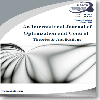Determination of optimum insulation thicknesses using economical analyse for exterior walls of buildings with different masses
Determination of optimum insulation thicknesses using economical analyse for exterior walls of buildings with different masses
___
- [1] Kaynaklı, Ö., Kılıç, M., Yamankaradeniz, R.,Isıtma ve soğutma süreci için dış duvar optimum yalıtım kalınlığı hesabı, TTMD Isıtma, Soğutma, Havalandırma, Klima, Yangın ve Sıhhi Tesisat Dergisi, 65, 39-45 (2010).
- [2] Şişman N., Determination of optimum insulation thickness of building exterial walls in different degree day regions by using economical analyse method when different insulation and wall structure materials are used, Osmangazi University, Master Thesis (2005).
- [3] Kurekçi N. A., Determination of optimum insulation thickness for building walls by using heating and cooling degree-day values of all Turkey’s provincial centers, Energy and Buildings, 118, 197-213(2016).
- [4]Kaynakli, Ö. A., study on residental heating energy requirement and optimum insulation thickness. Renewable Energy, 33,6,1164-1172 (2008).
- [5] Yuan J., Farnham C., Emura K., Alam M. A.,Proposal for optimum combination of reflectivity and insulation thickness of building exterior walls for annual thermal load in Japan, Building and Environment, 103, 228-237 (2016).
- [6] Barrau J., Ibanez M., Badia F.,Impact of the optimization criteria on the determination of the insulation thickness. Energy and Buildings, 76 459– 469 (2014).
- [7] Kaynaklı, Ö., Mutlu, M., Kılıç, M., Bina duvarlarına uygulanan ısıl yalıtım kalınlığının enerji maliyeti odaklı optimizasyonu, Tesisat Mühendisliği, 126, 48-54(2011).
- [8] Dombaycı, Ö. A., Gölcü, M., Pancar, Y., Optimization of insulation for external walls using different energy-sources, Applied Energy, 83, 9, 921-928 (2006).
- [9] Bolattürk, A., Optimum insulation thicknesses for building walls with respect to cooling and heating degree-hours in the warmest zone of Turkey. Building and Environment, 43,6,1055-1064 (2008).
- [10] Uçar, A. and Balo, F., Effect of fuel type on the optimum thickness of selected insulation materials for the four different climatic of Turkey. Applied Energy, 86,5,730-736 (2009).
- [11] Yu, J, Yang, C., Tian, L. and Liao, D., A study on optimum insulation thicknesses of external walls in hot summer and cold winter zone of China. Applied Energy, 86,11,2520-2529 (2009).
- [12] Uçar, A. and Balo, F., Determination of the energy savings and the optimum insulation thickness in the four different insulated exterior walls. Renewable Energy, 35,1,88-94 (2010).
- [13] Kaynakli O., A review of the economical and optimum thermal insulation thickness for building applications, Renewable and Sustainable Energy Reviews, 16, 415–425 (2012).
- [14] Vincelas F. F. C., Ghislain T., The determination of the most economical combination between external wall and the optimum insulation material in Cameroonian's buildings, Journal of Building Engineering, 9,155–163 (2017).
- [15] Uçar, A., Thermoeconomic analysis method for optimization of insulation thickness for the four different climatic regions of Turkey. Energy, 35,4,1854-1864 (2010).
- [16] Nyers J., Kajtar L., Tomi´c S., Nyers A., Investmentsavings method for energy-economic optimization ofexternal wall thermal insulation thickness, Energy and Buildings, 86,268–274 (2015).
- [17] Kaynakli, Ö., Parametric investigation of optimum thermal insulation thickness for external walls. Energies, 4,6,913-927 (2011).
- [18] TS 825, Thermal Insulation Regulations in Buildings, Turkish Standard, December 2013.
- [19] Okka, O., Mühendislik Ekonomisi, Nobel Press, 3rd Edition, Ankara, 2000.
- [20] Dombaycı Ö. A., Degree-days maps of Turkey for various base temperatures, Energy, 34, 1807–1812 (2009).
- [21] Yildiz A. and Ersöz M. A., The effect of wind speed on the economical optimum insulation thickness for HVAC duct applications, Renewable and Sustainable Energy Reviews,55,1289-1300 (2016).
- [22] Uludag Electricity Distribution Inc. Datas
- ISSN: 2146-0957
- Yayın Aralığı: 4
- Yayıncı: Prof. Dr. Ramazan YAMAN
Numerical solution of neutral functional-differential equations with proportional delays
A novel method for the solution of blasius equation in semi-infinite domains
Design and optimization of a power supply unit for low profile LCD/LED TVs
Burcu ERKMEN, Revna ACAR VURAL, İbrahim DEMİREL
On some properties of generalized Fibonacci and Lucas polynomials
Hatice YALDIZ, Zoubir DAHMANİ, Mehmet Zeki SARIKAYA
Sizing optimization of skeletal structures using teaching-learning based optimization
A Numerical Treatment Based on Haar Wavelets for Coupled KdV Equation
